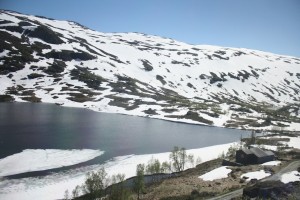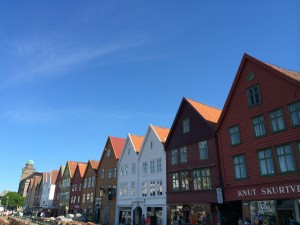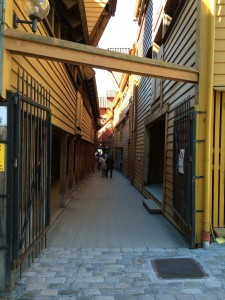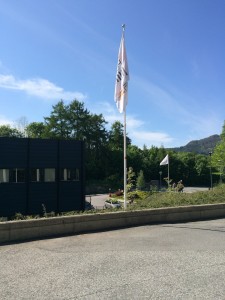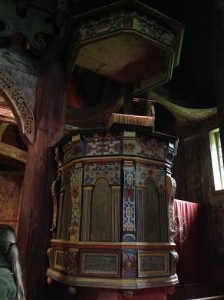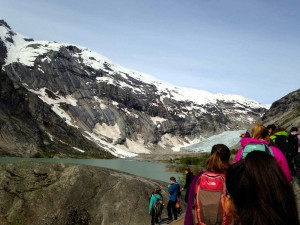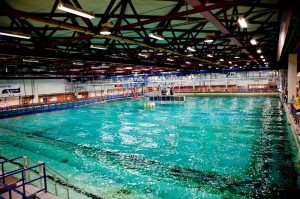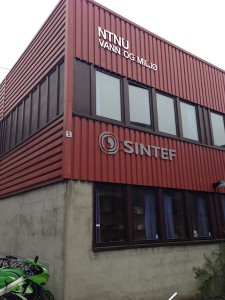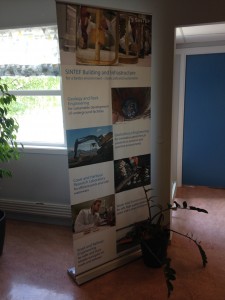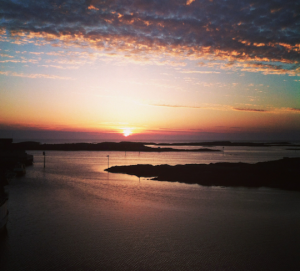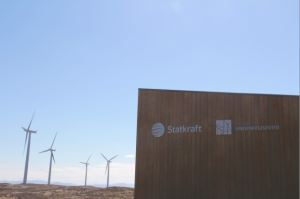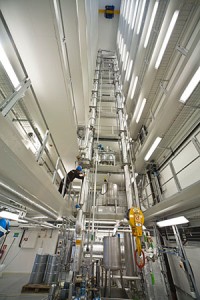 After a short journey from the city of Trondheim to the surrounding countryside, we arrived at one of Norway’s pilot carbon capture plants. At first glance the facility appeared to be just another industrial like building. Then I realized the structure is a towering 30 meters tall and immediately I became curious of the reason for having such a tall building. Prior to entering the the building, I knew little of what to expect since the process of carbon capture and storage was slightly unclear to me.
After a short journey from the city of Trondheim to the surrounding countryside, we arrived at one of Norway’s pilot carbon capture plants. At first glance the facility appeared to be just another industrial like building. Then I realized the structure is a towering 30 meters tall and immediately I became curious of the reason for having such a tall building. Prior to entering the the building, I knew little of what to expect since the process of carbon capture and storage was slightly unclear to me.
Prior to the tour, the man working at the plant used an intricate diagram and sample of the packing material to give us an overview of the process. Some of the processes and explanations were difficult to understand due to our lack of an engineering background. Luckily we attended a carbon capture and storage (CCS) presentation at the university the next morning which helped fill in the blanks and clarify any of our uncertainties, nicely complimenting the tour.
The pilot plant tests post-combustion carbon capture, which catches carbon dioxide after it is released from burning fossil fuels. The process at the plant begins with the burner where oil is burned to release a mixture of gas containing 10% to 11% of carbon dioxide which is needed to simulate an actual plant and test the capturing technology. Then the released gas mixture is carried through large pipes where it joins a liquid solution containing a specific type of amine being tested. The amine easily reacts with the carbon dioxide and absorbs it into the solution, separating it from the rest of the gas. This mixture then travels upwards through the 19 meter tall pipe containing intricate packing material to create as much surface area as possible. The one in the test plant was scaled down by about a factor of 100 since the burner used only produces a hundredth of the power and carbon dioxide as an actual plant. The pipe in the pilot plant is only 20 centimeters in diameter whereas in real life it would be an astonishing 20 meters. Scaling down the plant like this produces the same results while spending only a small fraction of the money. Amines are used as the reactors since they easily and quickly reacts with the carbon dioxide at temperatures between 40 and 70 degrees celsius and then rapidly break apart at temperatures over 100 degrees celsius. The purpose of finding something that easily reacts with carbon dioxide like this is so that it can be easily isolated from the other flue gases. The goal is usually to absorb about 90% of the carbon dioxide before the gas reaches the top of the pipe and is released. In the last stage of the system the carbon dioxide breaks its bonds with the amines and is released as pure compound which can then be stored. The process of storing carbon dioxide is a whole other task in itself and is not dealt with in this pilot plant. Instead the carbon dioxide is cycled back and builds up to create a mixture of 20% to 30% carbon dioxide in order to mimic conditions of the cement industry.
After this we explored the facility starting with the boiler on the first floor. Then we hopped on the elevator and ascended eleven floors to the top floor. From there we could go to the balcony and see every other floor all the way down to the first floor, observing all the equipment at once. Unfortunately, however, that plant is currently under construction in order to be expanded and therefore we are unable to witness the process of carbon capture in action. Our tour concluded with a short trip up to the roof just in time to observe the rest of the buildings at the facility and the breathtaking beauty of the surrounding mountainous Norwegian landscape before the rain.
The plant is able to test different amines, and sizes and types of piping, but only the best ideas and combinations even make it to this plant to be tested. This is likely the reason that the plant has been very successful so far. It is very important to have facilities like this to be able to test and perfect new technologies so that they can eventually be incorporated into the industry. Carbon capture seems very promising and if successfully introduced into industries it could help ween us off of fossil fuels while preventing the significant environmental damage associated with the release of carbon dioxide into the atmosphere. It is important, however, that storage techniques are also perfected since if there is no where to store the carbon dioxide, capturing it is useless.
Seeing an actual carbon capture plant even at a pilot stage, makes the industry seem a lot more feasible. Our group was extremely lucky to have this amazing opportunity to witness the beginnings of such a promising technology for cleaner energy use. This visit greatly expanded on what we learned about mitigation in class, giving us a glimpse of the promising future of sustainability.
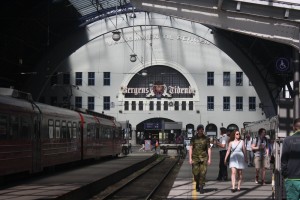 Today was spent on a train ride from Bergen to Oslo, for a total journey of 308 miles spanning over 7 hours. The trip was incredibly scenic, meandering through snow-covered mountains and winding rivers. This particular stretch of rail is the highest mainland railway in Northern Europe, with a peak elevation of 4,058 ft above sea level.
Today was spent on a train ride from Bergen to Oslo, for a total journey of 308 miles spanning over 7 hours. The trip was incredibly scenic, meandering through snow-covered mountains and winding rivers. This particular stretch of rail is the highest mainland railway in Northern Europe, with a peak elevation of 4,058 ft above sea level.

